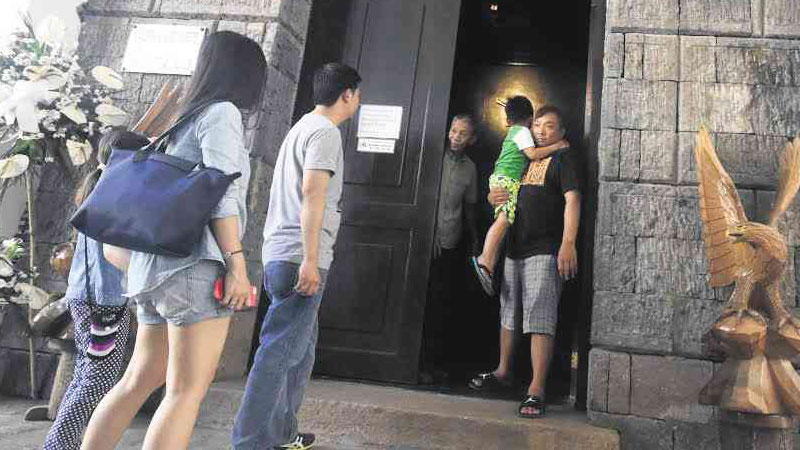
The Marcos mausoleum in Batac City is among popular tourist attractions in Ilocos Norte province. —WILLIE LOMIBAO
BAGUIO CITY—Ilocos Norte tourism should not be affected by the burial of dictator Ferdinand Marcos at Libingan ng mga Bayani in Taguig City, said architect Feliciano Palafox Jr., who was commissioned to draw up a tourism plan for the province.
“[The body] was never a factor in developing the Ilocos Norte tourism master plan requested by Marcos’ eldest daughter, Gov. Imee Marcos,” Palafox said during a green urban architecture forum here last week.
Marcos was buried at Libingan on Friday noon, catching the public off guard and triggering street protests by former martial law activists and human rights victims.
Until his burial on Friday, Marcos’ remains, which had been preserved in a temperature-controlled crypt at the Marcos ancestral house and museum in Batac City since 1993, had been drawing tourists daily to the province. Marcos died in exile in Hawaii on Sept. 28, 1989.
For the Ilocos Norte master plan, which incorporated designs for Batac City, Palafox said he had convinced Gov. Marcos to build service stores and inns in key towns in the province “to make people stay.”
He said he had suggested lighting up downtown Laoag, where the provincial capitol is located, as well as the city’s university belt.
But when asked, Palafox said Marcos’ remains were not the focus of the plan.
“They have so many attractions in Ilocos Norte but they were not fully advertised. After we were done, the governor made a jingle in various languages [to jump start tourism reforms], and the tourism arrivals grew five times. During Holy Week, they did not have enough hotels, not enough toilets and not enough bottled water,” he said.
Before the burial, Palafox said, he was contacted by the governor to refine the plan for towns and cities like Batac.
He said he heard about suggestions to build an alternative tomb for the strongman at a hillside park in Batac but it was not part of the master plan he was asked to design.
There is a mountain spot between Batac, where Marcos grew up, and Sarrat town, where he was born that would have been an appropriate burial site had it been pursued, Palafox said.
Marcos’ burial at Libingan has created new reasons to visit Batac, among them a longstanding theory that the body preserved at the mausoleum was a wax replica of the late president.
In a radio broadcast on Saturday, mortician Frank Malabed, 62, who embalmed Marcos in Hawaii and later worked to preserve the body in Batac, said he would not know if the interred body was just a replica because “I have not been in Ilocos for a long time.”
He also said he could not answer why a “different and far slimmer brown coffin” was carried by pallbearers to Marcos’ tomb.
He said he was informed that Gov. Marcos made the decision to follow a military prescription for Libingan burials although he expressed reservations about using a simple brown coffin. He said some military burials used white coffins.
But Malabed said the coffin would have contained Marcos. “There was no problem using that kind of coffin. The former president was thin enough and short enough to fit inside,” he said. —VINCENT CABREZA